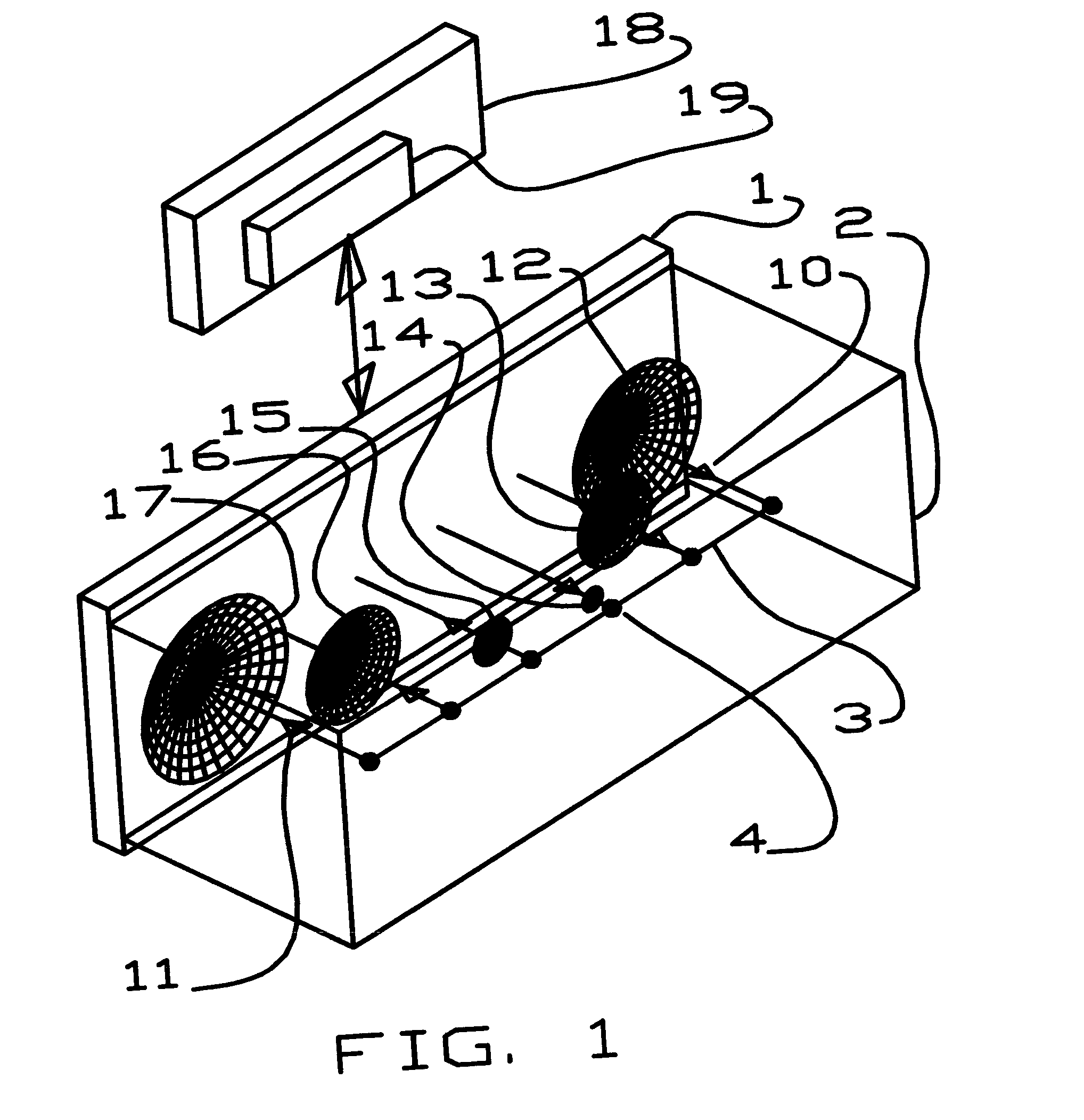Ultrasonic imaging with spot focused waves
a technology of spot focused waves and ultrasonic imaging, which is applied in the field of ultrasonic imaging with spot focused waves, can solve the problems of previous imaging technology not adequately meeting the challenge of imaging, poor image quality, and wave propagation perturbation, so as to achieve the effect of restoring the intended signal spectrum, predicting and accurately compensating, and wide bandwidth operation
- Summary
- Abstract
- Description
- Claims
- Application Information
AI Technical Summary
Benefits of technology
Problems solved by technology
Method used
Image
Examples
Embodiment Construction
[0053] The invention is designed to provide high resolution medical imaging that is incomparably superior to that achieved by conventional ultrasound technology. Furthermore, problems of conventional ultrasound technology relative to operation in real tissue must be solved.
[0054] The key objective is to resolve all possible dimensions of information to the greatest possible degree, especially where coherent conditions support such resolution. A common improvement opportunity in a variety of sensor technologies is left open by incomplete utilization of possible aperture space in conventional architecture. The medical need for much better imaging motivated exploration of such opportunities. Even though there have been significant complications, a revolutionary new architecture has been developed to enable sensing of early disease processes in soft tissue. The new architecture utilizes very large, two dimensional apertures for both transmit and receive operations. This gives the best ...
PUM
 Login to View More
Login to View More Abstract
Description
Claims
Application Information
 Login to View More
Login to View More - R&D
- Intellectual Property
- Life Sciences
- Materials
- Tech Scout
- Unparalleled Data Quality
- Higher Quality Content
- 60% Fewer Hallucinations
Browse by: Latest US Patents, China's latest patents, Technical Efficacy Thesaurus, Application Domain, Technology Topic, Popular Technical Reports.
© 2025 PatSnap. All rights reserved.Legal|Privacy policy|Modern Slavery Act Transparency Statement|Sitemap|About US| Contact US: help@patsnap.com



